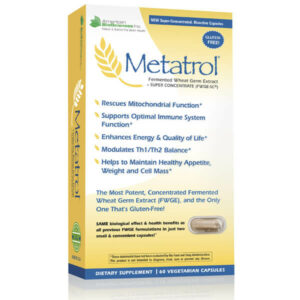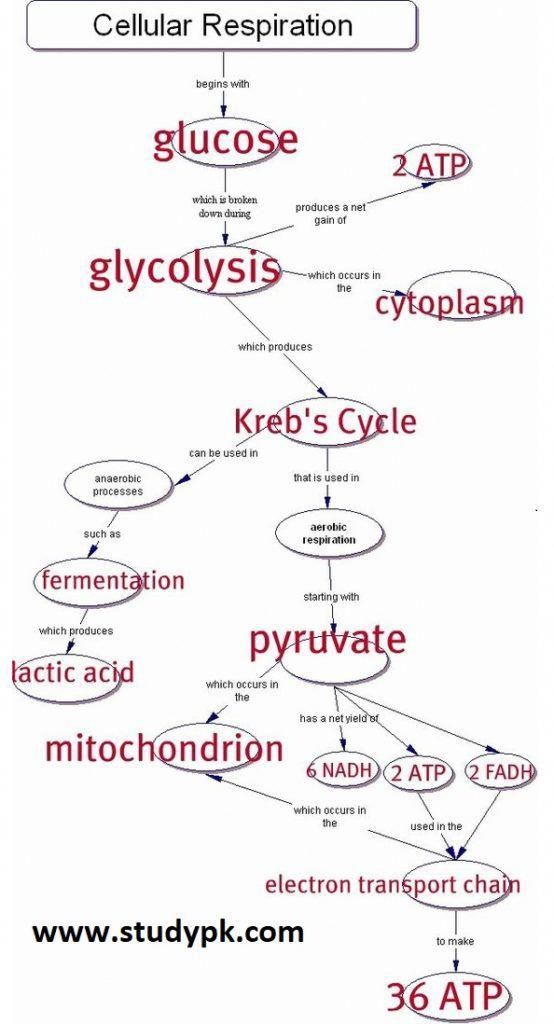
wheat germ induces autophagy and normalizes mitochondria metabolic activity
fermented wheat germ
Cancer has been considered as Mitochondriopathy.
Almost a hundred years ago, Otto Warburg spotted something special in cancer cells: aerobic glycolysis. This change in metabolism is a big deal for cancer cells; it helps them make enough building blocks like nucleotides, proteins, and lipids to grow fast. Unlike quiet cells, fast-growing ones need lots of carbon and nitrogen, so they don’t focus on making energy (ATP) the usual way (OXPHOS). Instead, they use mitochondrial enzymes to build substances they need. They also don’t pile up NADH and make less ATP by turning extra pyruvate into lactic acid. This shift from OXPHOS to glycolysis is controlled by a key enzyme, LDH-A, which slows down glucose processing in mitochondria. This change affects important functions like cell cycle control and cell death, helping cancer cells survive and grow. So, it’s not a surprise that cancer often comes with dysfunctional mitochondria and metabolism.
Scientists have tried to stop this “Warburg effect” by blocking LDH-A or another enzyme, PDK, to target cancer cells without harming normal cells. In the 1980s, Nobel winner Albert Szent-Gyorgyi’s work inspired research on fermented wheat germ extract (FWGE) as a possible cancer fighter. By the 1990s, studies began showing FWGE’s impact on glycolysis, and its power against cancer in live animals. Small studies in people also supported its use in cancer care. Here, researchers explore a potent FWGE extract. They found it boosts mitochondria, helps process pyruvate better, and slows down the Warburg effect, all while being safe for the liver and overall health.
The study below was conducted by: American Biosciences, Inc
Findings
The activity of A250 was tested in cell proliferation assays on seven different cancer cell lines. The cytotoxicity of A250 was tested on embryonic kidney,
murine melanoma, metastatic ovarian, metastatic breast, colon carcinoma, and two metastatic prostate cell lines.
This study shows how Fraction A250, a super-concentrated form of FWGE’s active parts, has some amazing actions. It changes the sourness in cells by lowering lactic acid and switches up cell metabolism, moving away from the Warburg effect to boost how much carbon goes into mitochondria and gets used up. A250 also opens up the outer layer of mitochondria, letting cytochrome c out into the cell’s jelly-like substance. This cytochrome c plays a big part in making cells die, especially through mitochondria. Plus, A250 helps cut down on glycolysis (sugar processing) in cells, making it tough for cancer cells to get the nutrients they need.
Tests show that A250’s work with mitochondria slows down tumor growth in live animals and helps them live longer. Even after two weeks of treatment, mice didn’t show any signs of toxicity, and looking closely at their livers confirmed A250 doesn’t harm normal tissue. Cancer is often linked with dysfunctional mitochondria, so fixing how they work, like boosting the Krebs’ cycle and managing cell death better, could be a game-changer in cancer care. Some researchers have already suggested using metabolic treatments to fix mitochondria, and our work shows that FWGE does similar outcomes without being toxic. A250 could be a benefit along with regular cancer treatments by balancing cell energy and making cancer cells more likely to die.
Why obesity matters?
a brief overview of some of the latest hypothesis regarding the role insulin, insulin resistance, obesity, metabolic syndrome, the Warburg effect and cancer
Obesity is a well-known risk factor for cancer, affecting how often people get cancer and how severe it can be. However, the detailed ways in which fat tissue interacts with cancer cell metabolism aren’t fully understood. Research reviews examined the history of research on how tumors get their energy, starting with Otto Warburg’s work in the 1920s. Warburg found that cancer cells prefer to use a process called anaerobic glycolysis to get energy, even when there’s oxygen available. This idea, known as the “Warburg effect,” helped scientists understand cancer metabolism.
In 2009, researchers discovered the “reverse Warburg effect,” which showed how certain cells around tumors (called cancer-associated fibroblasts, or CAFs) use a process called aerobic glycolysis. This process leads to the build-up of lactate in the tumor environment, which cancer cells can then use for energy.
In obese individuals, cancer cells show a different type of metabolic change called the “inversion of the Warburg effect.” Unlike the reverse Warburg effect, this relies on the abundance of nutrients in obese environments, causing cancer cells to make glucose from lactate. This review highlights how obesity leads to faster tumor growth and more aggressive cancers, introducing the “inversion of the Warburg effect” as a new mechanism related to the changed metabolic conditions in obesity. Some insights offer new ideas for developing innovative cancer treatments.
Insulin is closely linked to the progression of cancer, but scientists don’t fully understand how this happens. Recent research shows that changes in metabolism are important for cancer cells to grow. In recent studies, researchers elucidate how insulin helps cancer cells get energy. Specifically, they looked at how insulin affects a key enzyme in metabolism called pyruvate kinase M2 (PKM2) and the study identifies new PKM2-mediated effects of insulin on cancer metabolism, thus, advancing the understanding of insulin’s role in cancer.
The rising obesity epidemic has led to a big increase in many related diseases. Recent research has shown a strong connection between obesity-related insulin resistance (IR), diabetes mellitus (DM), and cancer. Many recent studies have looked into this link. Although details remain elusive, it’s becoming clear that high insulin levels and possibly high blood sugar levels are important in both the development of cancer and how well treatments work. As scientists learn more, this information might change how doctors decide to treat both diabetes and cancer.
Which calories cause the greatest mitochondrial damage?
- Fructose
- Trans fats
- BCAA’s (from corn fed animal meat and fish products)
- Alcohol
healthy blueberry wheat germ muffins
Low in sugar, additional yogurt and high in anti-oxidants. Quick and easy recipe.
how it works
Cancer has been thought of as a problem with the mitochondria, the parts of cells that create energy. Because of this, fixing how mitochondria work, specifically by activating the Krebs’ cycle and managing cell death processes, could lead to important advances in cancer treatment. One idea proposed by Schwartz and others is to use metabolic treatments like Hydroxycitrate and α-Lipoic Acid to restore mitochondrial function. Similarly, the current research shows that FWGE (fermented wheat germ extract) has similar effects. As a non-toxic, easy-to-take, and effective tumor growth inhibitor, FWGE, also known as A250, could support regular chemotherapy and targeted treatments by balancing cellular energy and boosting apoptosis (the process of programmed cell death).
FWGE is a mix of molecules from fermented wheat germ, studied extensively for fighting cancer safely. Researchers focused on the active parts using special methods and got a consistent part called A250, about 3% of FWGE. A250 was tested on seven cancer cell types, working better on some than others. It triggers cell death pathways, showing up in tests by boosting cytochrome c and changing proteins linked to energy in cells. Tests also proved A250 cuts down on lactic acid, showing its anti-Warburg effect.
In tests, A250 worked just like whole FWGE in fighting melanoma in mice, even though it’s just a tiny part of the original mix. A small dose slowed tumor growth by 68% and increased survival by over 50%. It also boosted proteins in cells and had no harmful effects.
Reference:
Schwartz, L., Supuran, C. & Alfarouk, K. The Warburg effect and the hallmarks of cancer. Anticancer Agents Med. Chem. 17, 164–170 (2017).

Cold Spring Harbor Laboratory, Cold Spring Harbor, NY 11724, USA. American Biosciences, Inc, Blauvelt, NY 10913, USA. Department of Pharmaceutical Chemistry, Semmelweis University, Budapest 1085, Hungary. Jewish Theological Seminary—University of Jewish Studies, Budapest 1084, Hungary.
conclusion
After two weeks, both FWGE and A250 made tumors much smaller. The control group had big tumors at about 4.02 cm³, while the FWGE group had around 2.02 cm³ and the A250 group less than 2 cm³. Treated animals also lived longer, from 28 to 43 days.
how to
This study used fractionated A250. For active component isolation, 10 g of whole standardized, commercially available FWGE, provided by American Biosciences Inc. Fraction A250 was 2.7–3.2% of whole FWGE biomass.
safety
Gluten sensitive or other allergen sensitive people should avoid wheat germ. Refined wheat germ oil typically contains no gluten. Wheat germ was well tolerated and is a natural food.
Wheat germ and individual components have been extensively studied in thousands of papers for a cross range of conditions, wheat germ oil has similar benefits.
According to the US FDA, wheat germ oil is gluten-free if it contains no more than 20 parts per million of gluten. This is because the refining process typically removes all gluten proteins from wheat germ oil. However, it’s possible that refined oils may contain trace amounts of gluten.

If you like natural health tips like the ones above you can learn more in Immune For Life
